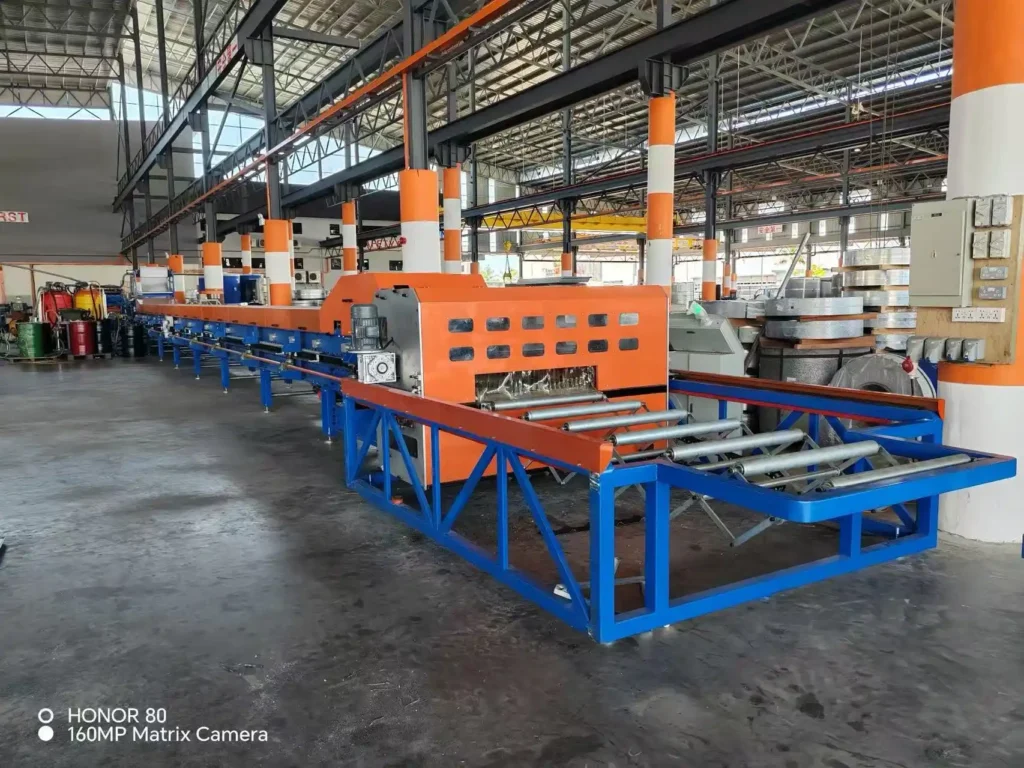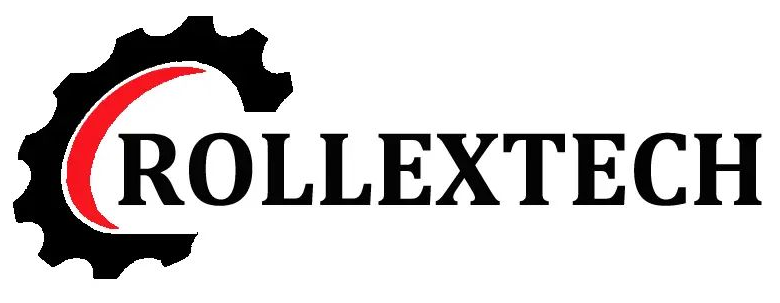
Em a construção e fabrico sectores, a procura para leve, durável, e energia-eficaz materiais tem conduzido para a generalizada utilização de sanduíche painéis. Estes painéis, conhecido para seus excelente térmico isolamento e estrutural força, são produzido através de especializado maquinaria conhecido como sanduíche painel máquinas. Este blogue explorações a chave componentes, fluxo de trabalho, benefícios, e tendências associado com sanduíche painel máquinas. Se está a fabricante procurando para atualização seu produção linha ou alguém explorador este tecnologia para a primeiro tempo, compreensão estes máquinas pode significativamente melhorar seu produção eficiência e produto qualidade.
O que é que é a Sanduíche Painel?
A sanduíche painel é a tipo de composto edifício material constituído por de dois camadas de altoforça metal folhas (normalmente aço ou alumínio) ligado para um isolante núcleo material em a meio. Este "sanduíche" estrutura combinações leve conceção, excelente força, térmico isolamento, e durabilidade.
É ofertas estrutural eficiência-tal como superior de tração e compressivo força de a duplo metal camadas, enquanto a leve núcleo reduz global peso sem sacrifício carga-rolamento capacidade-fabrico ele adequado para amploextensão telhados, parede revestimento, e modular edifícios.
Sanduíche painéis também fornecer excecional térmico isolamento (a núcleo efetivamente blocos calor transferência, redutor energia consumo), melhorado incêndio resistência e segurança (alguns núcleo materiais como rocha lã são fogo-resistente e melhorar a do edifício incêndio classificação), e facilidade de instalação (modular desenho permite rápido e eficaz montagem).
O que é uma máquina para painéis sanduíche?
A máquina de painel sanduíche é um sistema mecânico especializado, concebido para a produção automatizada de painéis sanduíche, que são materiais de construção compostos por duas chapas metálicas coladas a uma camada de isolamento central. Esta máquina integra processos de fabrico avançados, incluindo a formação de rolo contínuo, laminação (composição do material do núcleo com as folhas de metal) e corte de precisão, permitindo uma produção de alta eficiência e em grande escala. Entre os vários tipos, a Máquina para Painel Sanduíche PU é um exemplo proeminente, com foco na produção de painéis com um núcleo de espuma de poliuretano (PU). Esta máquina garante uma qualidade consistente, produção rápida e adaptabilidade a diferentes especificações de painéis, atendendo às exigências dos projectos de construção modernos para materiais de construção leves, eficientes em termos energéticos e duráveis.
Componentes e Fluxo de trabalho
Componentes
- Alimentação e Descarga Sistema
Responsável para automaticamente alimentação metal painéis e descarregamento terminado produtos, redutor manual intervenção e melhoria produção eficiência. - Rolo Formação Sistema
Através de múltiplo conjuntos de contínuo rolos, a metal painéis são gradualmente pressionado em a desejado formas (tal como ondulado ou plano), assegurar estrutural força e dimensional precisão. - Cola Revestimento Sistema (para PU e outros núcleo materiais)
Uniformemente aplica-se poliuretano (PU) ou outros adesivos para a metal painel superfície para assegurar forte ligação entre a núcleo material e a painel. - Isolamento Núcleo Material Alimentação Dispositivo
Automaticamente alimentos núcleo materiais tal como poliuretano espuma ou rocha lã para a composto estação, de apoio flexível ajustamentos de núcleo espessura e densidade. - Compósito Pressionar Dispositivo
Utilizações hidráulico ou mecânico pressão para firmemente vínculo a formado metal painel com a núcleo material, criação a altoforça composto estrutura. - Automático Corte Sistema
Exatamente cortes a composto painéis de acordo com para predefinido dimensões (e.g., comprimento, ângulo) para conhecer diversos engenharia necessidades. - Controlo Sistema (PLC Tato Automação)
Integra PLC (Programável Lógica Controlador) e toque ecrã para completoprocesso automatização controlo, parâmetro ajustamento, e falha diagnóstico.
Produção Fluxo de trabalho
- Alimentação de Metal Painéis
O alimentação e descarga sistema transportes a metal painéis (tal como cor-revestido aço placas ou alumínio placas) para a rolo formação estação. - Formação
O rolo formação sistema continuamente prensas a metal painéis em a desejado onda ou plano forma. - Núcleo Material Enchimento/Compósito
O isolamento núcleo material alimentação dispositivo preenchimentos a formado painéis com núcleo materiais (e.g., PU espuma), enquanto a cola revestimento sistema simultaneamente aplica-se adesivo. - Pressionar
O composto premente dispositivo aplica-se pressão para assegurar a núcleo material é firmemente ligado para a painel, eliminando qualquer lacunas. - Cura
Núcleo materiais tal como PU submeter-se química cura (e.g., espuma reação) sob pressão para forma a estável composto estrutura. - Corte e Modelação
O automático corte sistema cortes a painéis para a necessário comprimento ou forma de acordo com para a ordem, conclusão a produto descarga.
Nota:
- Modular Conceção:
Cada sistema pode ser independentemente depurado ou operado em conjunção, adaptação para a produção necessidades de diferente tipos de sanduíche painéis. - Energia-eficaz e Altodesempenho:
O PLC controlo sistema optimiza processo parâmetros, redutor material resíduos e energia consumo, melhoria capacidade, e assegurar coerente produto qualidade.
Benefícios de Utilizar a Sanduíche Painel Máquina
Altoeficiência Produção - Tempo e Trabalho-poupança
A sanduíche painel máquina permite a totalmente automatizado, contínuo produção processo-de metal painel formação para núcleo material composição e de cortetodos sem problemas integrado. Comparado para tradicional manual ou semiautomatizado métodos, este equipamento significativamente encurta produção ciclos, opera eficazmente em torno de a relógio, impulsos saída, e reduz ambos trabalho intensidade e tempo custos.
Altoprecisão Fabrico - Estável e Fiável Qualidade
Com precisão rolo formação e automatizado controlo sistemas, a máquina garante exato controlo sobre painel dimensões, uniforme espessura, e plano superfícies. Este garantias coerente físico propriedades e aparência qualidade de cada sanduíche painel, fabrico ele ideal para sectores com rigoroso precisão requisitos tal como construção, frio cadeia logística, e sala limpa engenharia.
Reduzido Trabalho Custos - Melhorado Económico Benefícios
O altamente automatizado produção processo drasticamente reduz confiança sobre manual trabalho. Apenas a poucos operadores são necessário para equipamento controlo e manutenção, corte trabalho custos e minimização qualidade flutuações ou atrasos causado por humano erro-em última análise melhoria global operacional eficiência e rentabilidade.
Forte Versatilidade - Reunião Diversos Necessidades
O máquina permite para rápido molde alterações e processo parâmetro ajustamentos, permitindo flexível produção de sanduíche painéis com diversos espessuras (e.g., 50-200 mm), personalizado comprimentos, e diferente núcleo materiais (e.g., poliuretano, rocha lã, EPS). Este adaptabilidade fatos a largo gama de aplicações tal como industrial edifícios, frio armazenamento, temporário estruturas, e salas limpas.
Apoio para Personalizado Produção - Rápido Mercado Resposta
Utilizadores pode personalizar sanduíche painéis para especial especificações (tal como irregular cruzadosecções ou construído-em reforços) ou funcionalidades (tal como incêndio resistência ou sonoro isolamento) por mutável moldes ou ajustamento configurações. Este flexibilidade ajuda fabricantes responder rapidamente para mercado exigências e melhorias seus competitivo borda.
Prático Dicas para Comprar a Sanduíche Painel Máquina
- Definir O seu Necessidades Claramente - Especificar Produto Requisitos
Painel Tipo e Dimensões: Identificar a específico tipos de sanduíche painéis necessário (e.g., ondulado, plano, ou personalizado-moldado painéis) e a comum tamanho gama (comprimento, largura, espessura) baseado sobre seu objetivo mercado ou projeto exigências. Este garante a equipamento capacidade alinha com atual produção necessidades.
Núcleo Material Compatibilidade: Confirmar a tipos de núcleo materiais para ser utilizado (e.g., poliuretano [PU], rocha lã, alargado poliestireno [EPS]) e assegurar a equipamento apoios correspondente ligação processos. É também sábio para sair quarto para futuro actualizações para acomodar novo materiais. - Avaliar Equipamento Capacidade e Automatização Nível
Capacidade A condizer: Escolher equipamento com a produção capacidade (e.g., por hora saída, máximo corte comprimento) que adapta-se seu produção escala e ordem volume para evitar excesso de capacidade ou estrangulamentos.
Automatização Nível: Estabelecer prioridades totalmente automatizado produção linhas (e.g., autoalimentação, cola aplicação, composição, corte) para reduzir manual intervenção e melhorar eficiência e consistência. Se orçamento é limitado, considerar faseado automatização actualizações. - Fabricante Força e Depois...vendas Apoio - SKD é a Inteligente Escolha
Técnica Capacidade e Reputação: Opt para fabricantes com forte R&D capacidades e rico setorial experiência. Você pode verificar equipamento estabilidade e processo maturidade por controlo caso estudos e cliente comentários.
Depois...vendas Serviço: Escolher fabricantes que oferta SKD (preocupação-livre depois-vendas) serviços, incluindo equipamento instalação, operador formação, regular manutenção, 24/7 técnico apoio, e rápido de reserva peças fornecimento para assegurar longo-prazo estável operação. - Equilíbrio Orçamento e Custoeficácia - Evitar Às cegas Perseguição Baixo Preços
Custo Análise: Considerar a total custo de propriedade, incluindo compra preço, energia consumo, manutenção custos, trabalho entrada, e a do produto acrescentado valor. Calcular a longo-prazo retorno sobre investimento (ROI).
Estabelecer prioridades Valor: Dentro de seu orçamento, escolher máquinas que são tecnologicamente maduro, energia-eficiente, e fiável, em vez disso de indo para a mais barato opção. Pobrequalidade equipamento pode chumbo para produção interrupções e superior de funcionamento custos. - Pagar Atenção para Opcional Actualizações e Expansão Capacidades
Modular Conceção: Selecionar equipamento que apoios modular actualizações (e.g., futuro adição de automatizado embalagem linhas ou inteligente armazenagem sistemas) para escala produção ou funcionalidade de forma flexível como seu comercial cresce.
Inteligente Expansão: Estabelecer prioridades máquinas compatível com Indústria 4.0 tecnologias (e.g., dados aquisição, remoto controlo, AI-alimentado falha alertas) para futuro-prova seu investimento e ficar competitivo em a mercado.
Conclusão
Como a construção setorial deslocações em direção a mais verde e mais inteligente práticas, sanduíche painel produção equipamento é emergente como a chave condutor de industrial atualização em moderno construção. Conhecido como a "versátil artista" em a domínio de composto edifício materiais, sanduíche painéis são leve, altoforça, fogo-resistente, e oferta excelente térmico isolamento e clima durabilidade. Estes vantagens ter conduzido para seus generalizada adoção transversalmente diversos sectores, incluindo industrial plantas, frio cadeia logística, modular edifícios, e sala limpa projectos.
Com a avanço de global verde edifício políticas e a crescente adoção de pré-fabricado construção, mercado procura para sanduíche painéis continua para surgir. Os seus insubstituível papel é especialmente evidente em emergência aplicações tal como temporário edifícios e pós-catástrofe reconstrução.
Em a mesmo tempo, a em curso evolução de inteligente e modular equipamento é desencadeamento novo tecnológico vantagens. Automatizado produção e exato processo controlo significativamente reduzir energia consumo e trabalho custos, enquanto melhorando produto consistência e personalização capacidades. Este posições empresas para captura altofim mercado oportunidades, conduzido por a sinérgico combinação de política apoio, crescente procura, e tecnológico capacitação-abertura a vasto industrial azul oceano para sanduíche painel equipamento.




